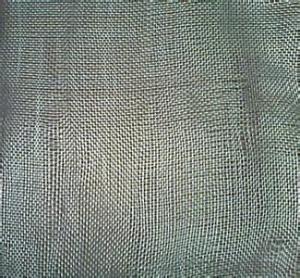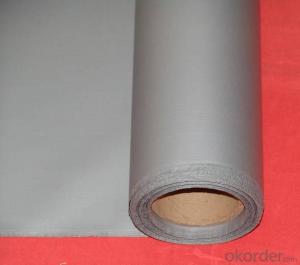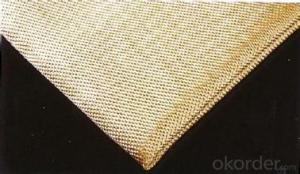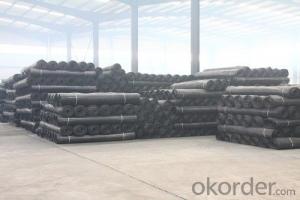Silica Cloth
- Loading Port:
- China Main Port
- Payment Terms:
- TT OR LC
- Min Order Qty:
- -
- Supply Capability:
- -
OKorder Service Pledge
Quality Product, Order Online Tracking, Timely Delivery
OKorder Financial Service
Credit Rating, Credit Services, Credit Purchasing
You Might Also Like
Quick Details
| Place of Origin: | Brand Name: | Model Number: | |||
| Application: | Weight: | Surface Treatment: | |||
| Width: | Weave Type: | Yarn Type: | |||
| Alkali Content: | Standing Temperature: | style: | |||
| soft point: | working temp.: | thickness: | |||
| advantage: | usage: |
Packaging & Delivery
| Packaging Detail: | cartons, pallet |
| Delivery Detail: | about 30 days upon confirmation |
Specifications
silica cloth
plain or satin woven
high temperature insulation
non-asbestos product
good chemical stability
- Q:Can fiberglass fabric be used for mold making?
- Yes, fiberglass fabric can be used for mold making. Fiberglass fabric is a versatile material that is commonly used in various industries, including mold making. It is known for its strength, durability, and resistance to heat and chemicals. To use fiberglass fabric for mold making, it is typically laminated with a resin, such as polyester or epoxy, to create a rigid and sturdy mold. The fabric is first saturated with the resin and then applied to the desired shape or object. Once the resin cures and hardens, it forms a solid mold that can be used to create replicas or castings. Fiberglass fabric molds have several advantages. They are lightweight, making them easy to handle and transport. They also have excellent dimensional stability, meaning they maintain their shape well over time. Additionally, fiberglass molds can be used for a wide range of materials, including concrete, plaster, and various resins. It is important to note that when working with fiberglass fabric and resin, proper safety precautions should be taken. This includes wearing protective clothing, gloves, and a respirator to avoid inhaling any harmful fumes. Additionally, ensuring proper ventilation in the workspace is crucial. In summary, fiberglass fabric can be effectively used for mold making due to its strength, durability, and resistance to heat and chemicals. When used properly, fiberglass fabric molds can produce high-quality replicas and castings for various applications.
- Q:Can fiberglass fabric be used for insulation sheets?
- Indeed, insulation sheets can make use of fiberglass fabric. The reason for its extensive utilization in insulation scenarios stems from its exceptional thermal attributes. Being a non-combustible substance capable of enduring high temperatures, fiberglass fabric becomes an ideal choice for insulating diverse areas like walls, roofs, pipes, and ducts. Furthermore, the fabric exhibits resistance to moisture, thereby thwarting the proliferation of mold and mildew. Moreover, its remarkable durability enables it to effectively retain heat or cold, ensuring efficient insulation in both residential and commercial structures.
- Q:Can fiberglass fabric be used for geotextiles?
- Yes, fiberglass fabric can be used for geotextiles.
- Q:The function of roof glass fiber non-woven fabric isolating layer
- Glass fiber isolation layer non-woven fabrics: waterproof, breathable, steam film, reflective insulation,
- Q:How is fiberglass fabric used in the production of electrical cables?
- Fiberglass fabric is commonly used in the production of electrical cables due to its excellent insulation properties. The fabric is made from woven strands of glass fibers, which are known for their high electrical resistance. When used in electrical cables, fiberglass fabric acts as an insulating layer that helps protect the conductive wires from external factors such as moisture, heat, and physical damage. During the manufacturing process of electrical cables, the fiberglass fabric is often impregnated with a resin or polymer, which enhances its insulating properties and ensures its stability and durability. The impregnated fabric is then wrapped around the conductive wires, forming a protective layer that helps prevent electrical leakage and short circuits. Moreover, fiberglass fabric is highly resistant to fire, making it an ideal material for electrical cables. In case of a fire outbreak, the fabric acts as a barrier, preventing the flames from spreading along the cable and reducing the risk of further damage or accidents. In addition to insulation and fire resistance, fiberglass fabric also provides mechanical strength and flexibility to the electrical cables. Its woven structure enhances the cable's tensile strength, allowing it to withstand tension and bending without breaking or losing its functionality. Overall, the use of fiberglass fabric in the production of electrical cables ensures reliable and safe transmission of electrical currents while protecting the cables and the surrounding environment from potential hazards.
- Q:How does fiberglass fabric perform in corrosive environments in chemical plants?
- Fiberglass fabric is highly resistant to corrosion and performs exceptionally well in corrosive environments in chemical plants. Its non-reactive nature and excellent chemical resistance make it an ideal choice for protecting equipment and structures from the damaging effects of corrosive substances. Additionally, fiberglass fabric has a high tensile strength and is lightweight, making it easy to install and maintain. Overall, fiberglass fabric offers long-lasting durability and reliability in corrosive environments, ensuring the safety and efficiency of chemical plant operations.
- Q:What does 240 grams of fiberglass cloth mean?
- Fiberglass cloth is also commonly called fiberglass geotextile. A geosynthetic material widely used in civil engineering. It is mainly made of glass fiber and staple fiber, needle punched non-woven fabric composite geosynthetics.
- Q:Can fiberglass fabric be used for insulation in oil and gas facilities?
- Indeed, insulation in oil and gas facilities can be achieved using fiberglass fabric. This material is widely employed for insulation purposes owing to its remarkable thermal properties, capacity to endure extreme temperatures, and resistance to harsh surroundings. Notably, it is non-flammable and effectively hampers heat transfer, rendering it ideal for insulating pipes, tanks, and equipment within oil and gas facilities. Furthermore, fiberglass fabric boasts the advantages of being lightweight, pliable, and effortless to install, thus making it a viable and pragmatic option for insulation in such facilities.
- Q:How does fiberglass fabric perform in chemical resistance?
- Fiberglass fabric generally performs well in chemical resistance due to its inherent properties. It is resistant to many chemicals and solvents, making it suitable for applications where exposure to corrosive substances is a concern. However, its resistance may vary depending on the specific chemicals involved and the concentration and duration of exposure. In such cases, it is advisable to consult chemical compatibility charts or conduct laboratory tests to ensure optimal performance.
- Q:How is fiberglass fabric used in the production of geotextiles?
- Fiberglass fabric is used in the production of geotextiles as a reinforcement material. It provides strength and stability to the geotextile, enabling it to withstand high tensile forces and enhance its durability. The fiberglass fabric is typically incorporated into the geotextile through lamination or needle-punching techniques, creating a composite material that can effectively prevent soil erosion, reinforce slopes, and provide separation and filtration functions in various civil engineering applications.
1. Manufacturer Overview |
|
|---|---|
| Location | |
| Year Established | |
| Annual Output Value | |
| Main Markets | |
| Company Certifications | |
2. Manufacturer Certificates |
|
|---|---|
| a) Certification Name | |
| Range | |
| Reference | |
| Validity Period | |
3. Manufacturer Capability |
|
|---|---|
| a)Trade Capacity | |
| Nearest Port | |
| Export Percentage | |
| No.of Employees in Trade Department | |
| Language Spoken: | |
| b)Factory Information | |
| Factory Size: | |
| No. of Production Lines | |
| Contract Manufacturing | |
| Product Price Range | |
Send your message to us
Silica Cloth
- Loading Port:
- China Main Port
- Payment Terms:
- TT OR LC
- Min Order Qty:
- -
- Supply Capability:
- -
OKorder Service Pledge
Quality Product, Order Online Tracking, Timely Delivery
OKorder Financial Service
Credit Rating, Credit Services, Credit Purchasing
Similar products
New products
Hot products
Hot Searches
Related keywords



























